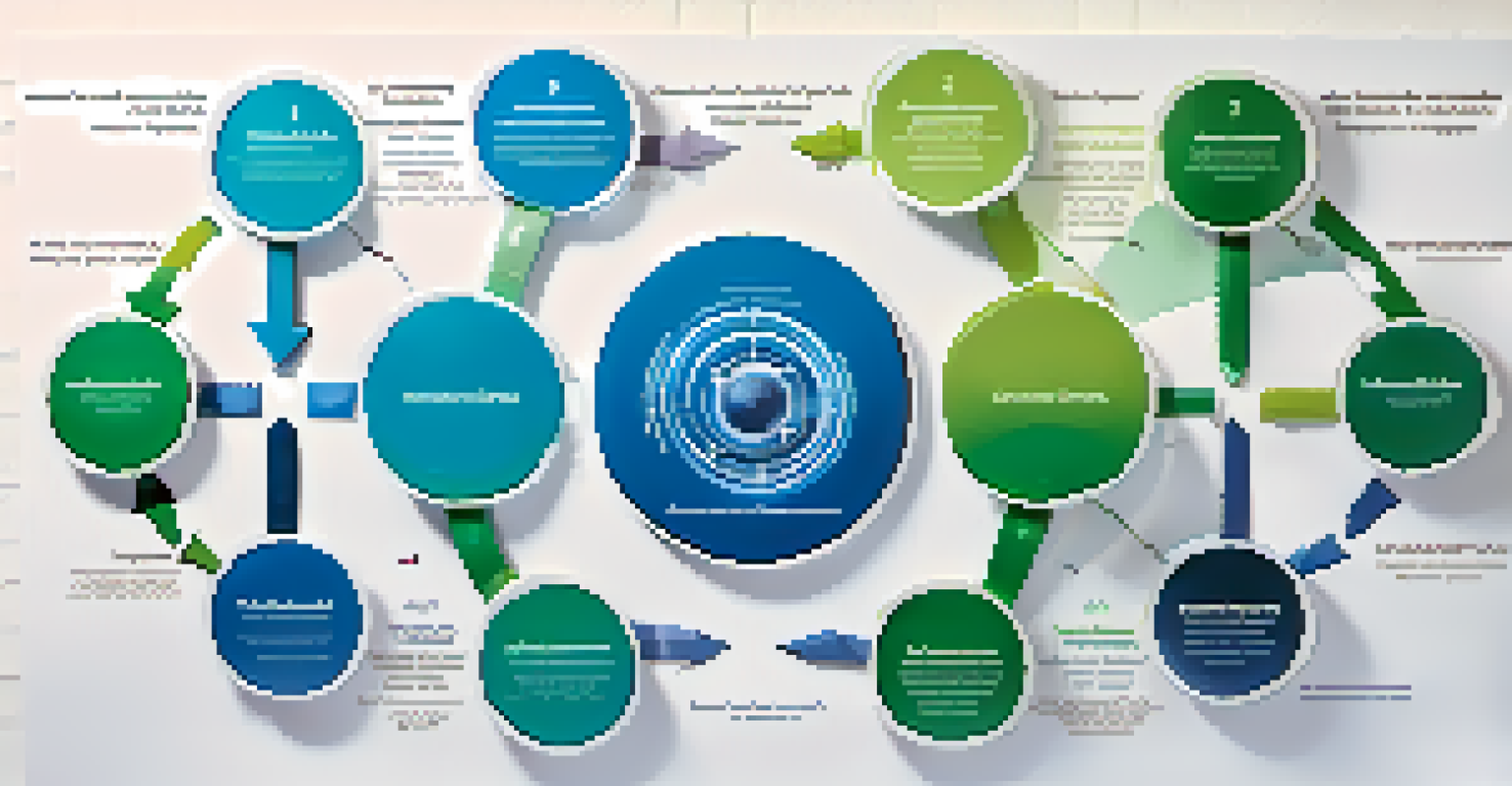Overcoming Challenges in Agile Business Practices Today

Understanding the Agile Framework and Its Importance
Agile is a project management methodology focused on iterative progress and flexibility. It emphasizes collaboration, customer feedback, and small, rapid releases to enhance product quality. This adaptable approach is essential in today’s fast-paced business environment, where change is a constant.
The greatest danger in times of turbulence is not the turbulence; it is to act with yesterday's logic.
In a world where consumer preferences shift rapidly, Agile allows teams to pivot quickly in response to feedback. By breaking down projects into manageable chunks, businesses can test and adapt their offerings more effectively. This not only improves customer satisfaction but also fosters a culture of innovation within teams.
However, despite its benefits, many organizations struggle to implement Agile practices fully. Understanding the framework is just the first step; companies must also embrace the cultural shift it demands to truly benefit from its principles.
Common Challenges Faced in Agile Implementations
One of the most significant challenges organizations encounter is resistance to change. Employees accustomed to traditional project management may feel uneasy about adopting Agile practices. This reluctance can manifest in a lack of commitment or failure to follow through on Agile principles.

Additionally, miscommunication between teams can hinder Agile processes. Agile relies heavily on collaboration and transparency, but if teams are not aligned in their objectives, it can lead to confusion and inefficiencies. This often results in delays and frustration, undermining the very purpose of Agile.
Agile Promotes Flexibility and Collaboration
The Agile framework emphasizes iterative progress, customer feedback, and collaboration to enhance product quality in a rapidly changing business environment.
Lastly, maintaining a balance between flexibility and discipline can be tricky. While Agile encourages adaptability, it’s crucial to have enough structure to guide teams. Without proper frameworks in place, teams may struggle to stay focused and productive.
Building a Supportive Agile Culture
Creating a supportive culture is vital for successful Agile implementation. This means fostering an environment where team members feel safe to share ideas, take risks, and collaborate openly. When employees trust one another, they're more likely to engage fully in the Agile process.
Agile is a mindset, not a methodology. It’s about being flexible, responsive, and continuously improving.
Leadership plays a crucial role in shaping this culture. Leaders should model Agile values, encourage feedback, and celebrate team successes. By demonstrating a commitment to Agile principles, they can inspire others to embrace the methodology wholeheartedly.
Moreover, ongoing training and education can help ease the transition to Agile. Providing resources and workshops can empower employees with the knowledge and skills they need to thrive in an Agile environment.
Embracing Continuous Improvement in Agile Practices
Continuous improvement is at the heart of Agile practices. This concept encourages teams to regularly evaluate their processes and outcomes, identifying areas for enhancement. By adopting this mindset, organizations can ensure they remain competitive and responsive to market changes.
Teams can implement regular retrospectives to reflect on their performance. During these sessions, they can discuss what went well, what didn’t, and how to improve for future iterations. This practice not only boosts team morale but also cultivates a culture of accountability and growth.
Overcoming Challenges in Agile Adoption
Organizations often face resistance to change, miscommunication, and the challenge of balancing flexibility with structure during Agile implementation.
However, it’s essential to approach continuous improvement with an open mind. Teams must be willing to embrace feedback and change, even if it means stepping out of their comfort zones. This willingness is crucial for long-term success in Agile.
Leveraging Technology to Enhance Agile Practices
In today's digital age, technology can significantly enhance Agile practices. Tools such as project management software and collaboration platforms streamline communication and task management. By utilizing these resources, teams can improve efficiency and transparency.
Moreover, automation can help reduce repetitive tasks, allowing team members to focus on higher-value activities. For instance, automated reporting can provide real-time insights into project progress, enabling quicker decision-making. This shift from manual to automated processes can enhance overall productivity.
However, it’s crucial to choose the right tools that align with Agile principles. Overcomplicating processes with unnecessary technology can lead to confusion. Therefore, organizations should prioritize simplicity and usability in their tech solutions.
Prioritizing Customer Feedback in Agile Processes
Customer feedback is a cornerstone of Agile methodology. Regularly soliciting input from users helps teams understand their needs and adjust their offerings accordingly. This practice not only enhances product quality but also fosters stronger customer relationships.
Incorporating feedback loops into the Agile process can be incredibly beneficial. For example, conducting user testing sessions or surveys can provide valuable insights that inform future iterations. By actively engaging with customers, businesses can ensure their products resonate with their target market.
Continuous Improvement is Essential
Embracing a culture of continuous improvement allows teams to regularly evaluate their processes and adapt, ensuring long-term success in Agile practices.
However, it’s essential to balance customer feedback with the team's vision. While customer input is vital, teams must also stay true to their objectives and values. Finding this balance is key to delivering products that not only satisfy customers but also align with the company’s mission.
Scaling Agile Practices Across the Organization
Scaling Agile practices beyond individual teams can be a daunting task. It requires a strategic approach to ensure alignment across the organization. Leadership must set clear goals and expectations to guide teams in their Agile journey.
One effective way to scale Agile is through training and mentorship programs. By empowering teams with knowledge and resources, organizations can facilitate a smoother transition. Additionally, establishing cross-functional teams can help break down silos and encourage collaboration.

However, patience is key when scaling Agile. It’s a gradual process that requires ongoing support and adaptation. Organizations must be prepared to learn and evolve as they implement Agile practices on a larger scale.